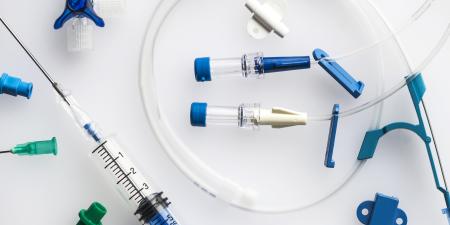Case
Mr. Harvey was admitted to the general medical service of a teaching hospital. It was his third admission in 8 months. One prior admission was, like this one, due to exacerbation of long-standing chronic obstructive pulmonary disease (COPD). The other admission was prompted by dizziness and fainting brought on by his poorly controlled diabetes. Mr. Harvey is 57 years old and is African American. Management of his health is complicated by obesity and (as he confessed to Tina Moseley, the third-year medical student who interviewed him when he arrived on the unit) his continued smoking. A chest X-ray ordered in the emergency department before Mr. Harvey's admission showed results consistent with pneumonia, though blood culture results were not back. Antibiotic treatment administered intravenously was indicated, but Mr. Harvey's peripheral circulation was poor, and several attempts to place the IV in his arms failed. Becoming somewhat irritable with the attempts, Mr. Harvey complained that, "No one in this place can ever find my veins."
Dr. Amanda Gage, the senior resident, decided that a subclavian central line should be placed to gain intravenous access. Dr. Gage is supervising 2 third-year medical students. The students—Kenny Krasnow and the previously mentioned Tina Moseley—are in week 6 of their 8-week internal medicine rotation. Kenny has successfully placed central lines on several occasions during his rotation. Tina has been unsuccessful on 2 attempts with different patients; in each case Dr. Gage stepped in and completed the placement. For a couple of reasons, Mr. Harvey is a good patient for Tina's next attempt. His condition is not emergent; he is accustomed to the teaching hospital routine, and has taken Tina into his confidence. He considers her to be "on his side." On the other hand, his obesity makes the procedure more difficult than usual. Because of his multiple health problems, should Tina puncture his lung, the complications would be life-threatening. Additionally, he is already irritable about the inability of the staff at this hospital to "find his veins."
Tina knows that she should succeed at placing a central line before completing her internal medicine rotation, and time is running out. Dr. Gage asks Tina to attempt to place the line. She is on her way to inform Mr. Harvey about the procedure and its risks and to obtain his consent. She identified herself as a student when she first introduced herself and interviewed him. They seem to communicate well, but Mr. Harvey continually refers to her as "doctor." As she walks, she wonders how much she should tell Mr. Harvey about her past attempts and whether she needs to remind him that she is a student. When she enters Mr. Harvey's room, he is chatting with his grown daughter who has just arrived.
What should Tina tell Mr. Harvey? (select an option)
B. She should inform him that she will be performing the procedure.



